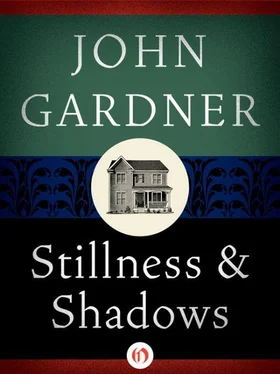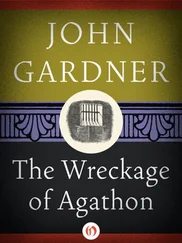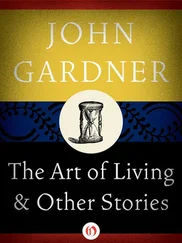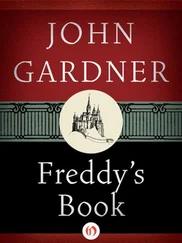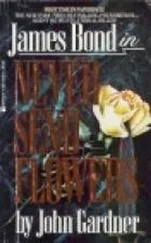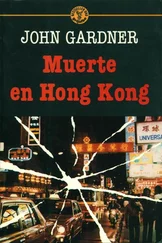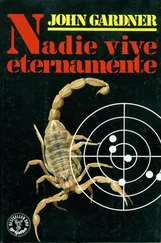“No,” she said. Again her eyes filled and she turned away sharply, pawing at the tears with the back of one wrist.
Craine threw a scrutinizing look at her, then poured himself another splash of Scotch. He registered — and hurriedly forgot — the thought that he was drinking too fast. It was a thought too complex to lead to action anyway. He wanted to keep his mind sharp, wanted not to rouse her doubts and fears, but also the curious excitement he was feeling was making him jittery, and if he had to keep consciously remembering not to drink ….
“Men are not exactly the meaning of every woman’s existence,” she said. She spoke mainly to the farther wall, the clock. When he said nothing she continued, turning back to him, “Are you aware that before this present civilization, women ruled the world for centuries?”
“I hadn’t heard that,” Craine said. At last the waitress acknowledged his eye. When she was near enough to hear him, he said, “Two coffees.” Then, to Elaine, not looking at her directly: “You’ll have coffee?”
She shrugged irritably. “I guess.” This time she dabbed at her tears openly and sniffed.
“Two coffees?” the waitress said, mainly to Elaine. Craine nodded. The waitress hesitated a moment longer, then left.
“It’s true,” Elaine said. She took a breath, getting control of herself. “When Caesar fought in Gaul, most of the generals who fought against him were women. Society was matriarchal. You know what I mean? For thousands of years it was the Mother Goddess that ruled everything. Look at Stonehenge. It’s a circle, right? And those tumps in Ireland and Wales, or wherever.” She looked up at him. “You know what tumps are?”
“Not offhand.” Craine sipped his Scotch, eyes lowered.
“They’re very ancient.” Her voice became teacherish. “We studied them in anthropology. They’re these man-made hills, they have a door facing east, at least some of them do.” She remembered her paper napkin and used that on her tears. She had herself in hand now. She wadded the paper napkin, then changed her mind, smoothed it out, and folded it. “At dawn on the day of the winter solstice,” she said, “the sun’s first light goes in through the door and down this long shaft and hits a sort of target that’s carved in the rock, a sort of spiral, you know what I mean?” With the index finger of her right hand she showed a flow of light into the palm of her left. He was increasingly surprised by the length and quickness of her fingers.
“Hmm,” Craine said and nodded, still looking at her hands.
“Other places in the tumps there are these ledges with bones on them, human skeletons. They’re burial places. There are spirals there too. Anthropologists think they have something to do with rivers. Eddies rippling out, something like that.” With her fingers she made eddies.
“I see,” Craine said.
“Personally, I think they’re mistaken, they’ve missed the whole point .” She shook her hands indignantly, palms toward her face, then, as if her gesture had startled her, looked at her fingertips.
The waitress came bringing the coffee. Elaine sniffed, then leaned left, talking around the waitress.
“One of the tumps is a model of a huge, you know—” She thought a moment. Her hands shaped an upended bowl. “Womb. Made of different kinds of sand? It’s at Salisbury, I think. So that proves it, they were worshippers of the Mother Goddess. The pyramids were probably the same — that’s what I think — only geometrical, which means modified by the male principle — the left lobe, things like that. The tumps were much earlier. I think the spirals represented, you know — the female.”
Craine nodded, cheeks tensed by his effort to let none of it slip past him, since she was speaking very fast.
“Can I tell you something else?” she asked, clasping her hands. She flashed panic.
Craine hesitated for an instant, put his hand around his glass, then nodded. He remembered his coffee and decided to measure in sugar, then Scotch. She seemed to have forgotten hers completely.
“For some of the tumps, and for the rings — like Stonehenge — they dragged the stones overland for hundreds of miles. According to this one book, by someone named Thorn or something, all the stone rings are built to the same measure, which means they were all built by this one civilization, from the Arctic Circle clear down to the Gaza Strip. There was once a ring of stones there called the Giant Bed of Og. It’s in the Bible. So their civilization — this one huge civilization — lasted hundreds and hundreds of years, and they must have had practically no wars, you know what I mean? Otherwise they couldn’t have done it.”
“Interesting,” Craine said again. He pushed the sugar across to her. She gave a little jump, as if the sugar bowl might bite, then recognized what it was and hurriedly spooned sugar into her coffee, then poured in cream, talking:
“Hundreds and hundreds of years without war, and then all of a sudden you get the Father God, gods like Zeus and Jehovah—” She glanced suspiciously at the cream.
“I don’t know,” Craine said.
“What?” she said, startled, jumping as if he’d spit.
He pursed his lips, brazenly filled his whole glass with Scotch. It was strange, all right — not even Craine could deny it — sitting here arguing antiquities with a client, a female client at that, in fact a child, and a slightly crazy one. The unusual midmorning heaviness had come to his eyelids, though it was not yet midmorning, and he was beginning to feel the usual pleasant relaxation of mental faculties. Sounds around him — talk, the clank of dishes, the tractor trailer going by outside the window — were beginning to take on the usual faintly electronic ring. “Slow down, my friend,” he told himself, but raised his glass and, in cheerful self-defiance, drank. As if drunkenness had come on him in one sudden chop, his eyes narrowed, his smile became superior and snaky. He was beginning to act. “Maybe your Mother Goddess did her work too well.”
“What?” she said.
“Pressure of population. Isn’t that what brought on wars?” He saluted with his glass, took a sip, set it down. “I don’t know about tumps — that one’s slipped by me. But I know about spirals.” He moved his hand over to the Scotch-coffee and raised it for a sip, looking over the rim of the cup at her. “You know how it is in the detection business. You try to stay on top of things. You never know what piece of out-of-the-way information will come in handy.” He wasn’t so drunk as not to know that the lie was ludicrous, but he enjoyed it. “Spiral’s pretty often a snake symbol. India, Sumeria—” He glanced away. Sumer? “Coiled snake,” he said. “Think about it.”
She was looking at her watch, where her eyes had fled from his glass and cup. Her eyebrows rose. No doubt she’d missed her class. But she said, “What do you mean?”
“Snake’s a male symbol,” Craine explained, as superior in his knowledge as the girl had been, earlier. “Probably as much the way he moves as his shape.” He leaned toward her. “But coiled, he makes a circle. That’s a female symbol. And then there’s the matter of the light ray that penetrates the shaft — the shaft in the tump.”
Her eyes widened more. “Are you crazy?” she said.
“What’s so crazy?” he said. He rolled his palms out, Jewish. “You think female can exist without male?”
“Jesus,” she said, looking at her watch again. “I’ve missed my class.”
“I’m sorry,” Craine said, flustered. He drained his cup, then looked around for the waitress to get the check.
Elaine was staring at him, her face — her whole head — grown smaller. “How come you know all this?”
Читать дальше
